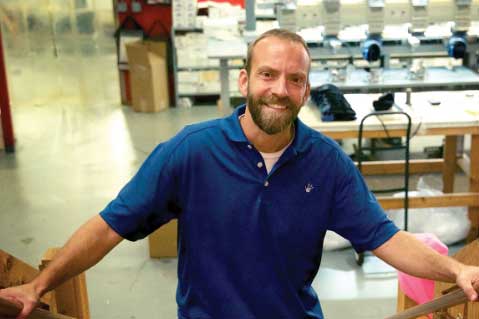Religious Freedom, Anti-Gay Discrimination Collide In Court Case Over T-Shirts
A Kentucky apparel decorating company and the imprinted T-shirts the business declined to print for a gay pride festival are at the center of a renewed court battle that pits arguments for freedom of conscience and religion against accusations of anti-LGBTQ discrimination.
The case involving Hands On Originals (asi/219413), a Lexington, KY-based company that specializes in producing branded apparel for Christian organizations, schools and others, is before the Kentucky Supreme Court.

Blaine Adamson
Last May, the Kentucky Court of Appeals ruled in favor of Hands On Originals (HOO), a verdict that marked the second court victory for the company, which previously prevailed in 2015 in the Fayette Circuit Court. Nonetheless, the Lexington-Fayette Urban County Human Rights Commission appealed the 2017 ruling and the case is now to be heard by the Kentucky Supreme Court.
The issue began in 2012 when the Lexington-based Gay and Lesbian Services Organization (GLSO) asked HOO to print shirts for its pride festival. HOO Owner Blaine Adamson declined the order, saying that printing shirts that bear certain messaging would conflict with his conscience and religious beliefs as a devout Christian. Adamson has said that he offered up another print shop that would produce the order for the same price.
In reaction to Adamson's refusal, the GLSO filed a complaint with the Lexington-Fayette Urban County Human Rights Commission and HOO was charged with violating Lexington's fairness ordinance, which, in part, prevents businesses open in a public forum from discriminating against people based on sexual orientation.
An initial ruling went against HOO, but that decision was reversed in the subsequent Fayette Circuit Court decision, reports show. In that 2015 ruling, Judge James D. Ishmael cited Kentucky's religious freedom statue and stated that Adamson was not refusing the GLSO as would-be customers because of their sexual orientation, but because he objected to the message on the T-shirt. "It is clear beyond dispute that HOO and its owners declined to print the T-shirts in question because of the message advocating sexual activity outside of marriage between one man and one woman," Ishmael wrote. "The well-established Constitutional rights of HOO and its owners on this issue are well settled." In 2017, the appeals court ruled that HOO's right to free speech supersedes Lexington's fairness ordinance.
In the latest court battle, Kentucky Gov. Matt Bevin recently filed a legal brief in support of HOO, saying Kentucky's constitution ensures freedom of conscience. "Requiring (HOO's) owners to engage in speech with which they disagree is a violation of their freedom of conscience, and we are hopeful that the Kentucky Supreme Court will reaffirm this bedrock of Kentucky's constitutional charter," said Steve Pitt, Bevin's general counsel, according to the Lexington Herald Leader.
Josh Mers, chairman of Lexington Fairness, an organization that works for fairness and equality in Kentucky, told the Lexington Herald Leader that arguments for freedom of conscience are a "tired old message" that do not have bearing on the HOO case. "I think the most disappointing part is that the governor has decided to add the political aspect to the case by weighing in as the Governor of Kentucky," said Mers, who is running for a seat in Kentucky's state house.
The Alliance Defending Freedom is representing Adamson and his company. In a video posted to ADF's YouTube account, Adamson explained his reasons for declining the order from GLSO.
Also, in an online commentary, Adamson has said: "I've happily served and employed people of all backgrounds, of all walks of life.... I have gay customers and employ gay people. For example, we have printed materials for a local band called Mother Jane whose lead singer is a lesbian. That was never a problem for us because ... we'll work with everyone, but we can't print all messages." Adamson added that he has declined other orders, including one for "a simple black shirt with white text that read, 'Homosexuality is a sin.'…I don't think that's how Jesus would have handled the issue; Jesus would have balanced grace and truth."